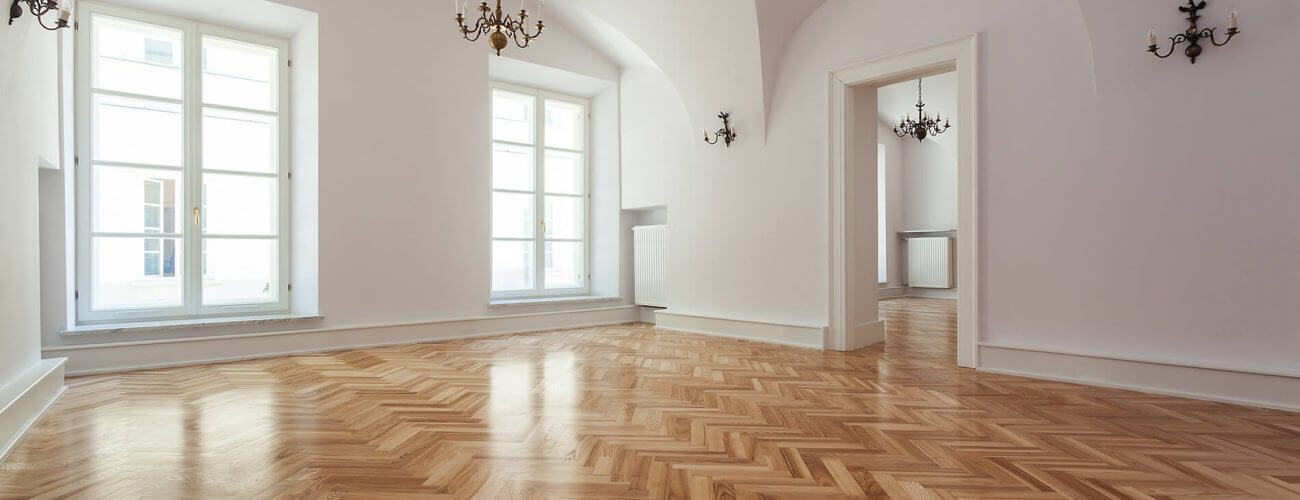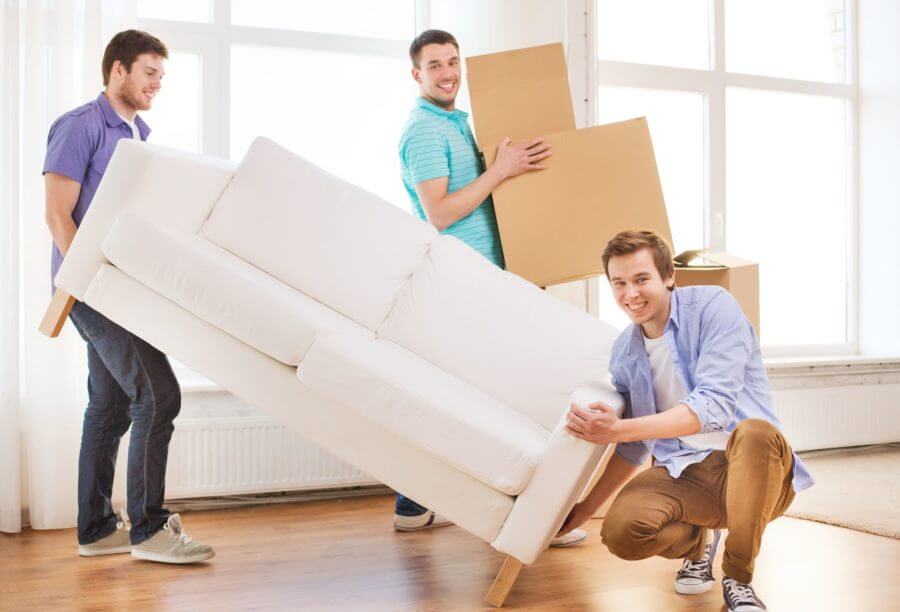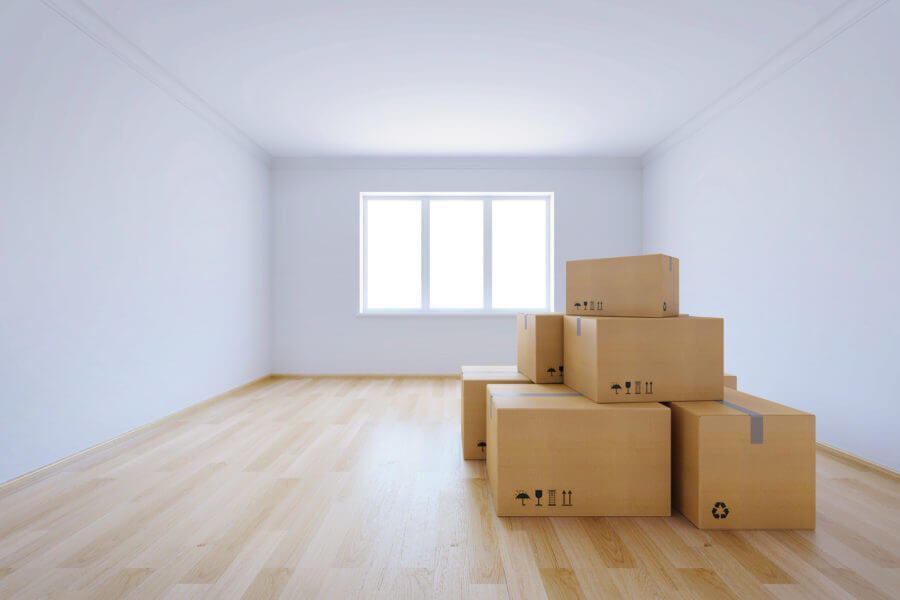

How to Protect Floors When Moving Across the Country
Posted in How-to,Planning the Move on November 20, 2024
With all the heavy lifting, endless foot traffic, and potential for unexpected mishaps, your floorings could face a real beating during the relocation day. How to protect floors when moving? Is there a way at all? Keeping your floorings scratch-free, stain-free, and dent-free doesn’t require a miracle, just a few clever strategies and the right tools. Luckily for you, we are here to walk you through the process and help you learn all you need to know.
How to Protect Floors When Moving Across the Country?
When relocating to a new city, preserving your flooring should be a top priority to avoid costly damage. It’s even more important if you’re renting the place or preparing your home for sale. Using the right techniques and supplies ensures your hardwood, carpet, tile, or laminate flooring remains scratch-free and in excellent condition throughout the relocation.
However, you need to start by preparing your home way ahead of the relocation day. Clean the flooring to spot any existing damage and measure doorways and furniture to avoid awkward maneuvering. You also need to get essential supplies that provide much-needed shielding against scratches, dents, and stains like furniture sliders, protective floor runners, and so on.
Why Floor Protection Is Crucial on Relocation Day
When relocating furniture, appliances, or even boxes, floorings can easily become scratched, dented, or stained. Using protective materials like drop cloths, floor runners, or furniture sliders ensures that all your surfaces remain in good shape, saving you from unnecessary relocation stress and expenses. Not to mention, it makes the entire process smoother and safer for everyone involved.

What Is Most Likely to Cause Damage to Your Floorings During a Relocation?
As we concluded, when moving, floor protection is more than necessary – after all, all of your flooring will endure more than just a bit of foot traffic. With multiple people constantly carrying heavy items in and out of your home, your floorings are exposed to potential damage at every turn. Even the most careful person can unintentionally leave marks, scratches, or dents. Understanding the main causes of floor damage can help you take precautions and preserve your home.
For example, it’s easy for a piece of heavy furniture to slip or be dropped during all the chaos that comes with relocating to a new home. When this happens, hardwood can end up with deep scratches or dents, while tiles or laminate flooring may crack or chip.
Tight spaces like narrow hallways, doorways, or sharp corners often require twisting and turning bulky furniture into the needed position. In the process, items can scrape or bump against the floor, leaving scratches or even gouging surfaces.
In the end, shoes can also leave scuff marks on hardwood, scratch laminate, or grind dirt into carpets, causing stains that are difficult to remove. Taking the time to prevent these common culprits when organizing a relocation can save you a lot of headaches when you’re moving cross-country.
The Types of Flooring and the Damage They Can Endure
Taking extra care with multiple flooring types can prevent costly repairs and help them look their best, even after a long-distance move. That being said, when planning a relocation to a new city, keep in mind that:
- Hardwood flooring is highly prone to scratches and dents from heavy furniture and relocation equipment.
- Tile flooring, while durable, can crack or chip if a heavy item is dropped.
- Laminate flooring can easily be scuffed or scratched if protective measures aren’t in place.
- Carpets are at risk of stains and snagging during the hustle of the big day.

What to Do Before the Relocation Day Comes?
Protecting your floorings starts well before the actual relocation day – with the right preparation and to-do list. For example, you should obtain a sturdy dolly that can make relocating heavy furniture and boxes a breeze. However, in order to shield floorings, it’s essential to choose one with soft rubber wheels. These will glide smoothly over your flooring without scratching or denting the surface. Make sure to roll the dolly along prepared pathways to avoid accidental floor damage.
It’s also a good idea to wrap the legs and sharp edges of the objects you’re relocating. When you’re relocating a bad frame, for example, or moving a heavy desk, use blankets, towels, or bubble wrap. They will provide an extra layer of protection, not just for your floorings, but also for your furniture and walls as you navigate tight spaces.
Try to avoid last-minute jams and awkward shuffling by taking accurate measurements of your doorways, hallways, and furniture. This helps you map out the best way to relocate large items without scraping the floors or bumping into walls, saving both time and frustration.
At the same time, to keep dirt and scuff marks to a minimum, you can buy shoe covers or booties. If you don’t want to leave anything to chance, offer them to everyone involved in the process. This simple precaution goes a long way in keeping everything free of stains and scratches.
Should You Clean the Floors Before or After the Goods Are Loaded?
It may seem excessive, but you should clean the flooring before the big day comes. Here’s why: starting with clean flooring allows you to spot any existing damage, scratches, or stains that might be mistaken for relocation-related accidents later. Additionally, a clean floor provides better traction, reducing the chances of slipping and causing accidents during the move. Even though dirt will inevitably be tracked in during loading or unloading, this action can also stop any debris from being trapped under the protecting coverings.
However, the move-out cleaning checklist should also include cleaning the flooring afterward, once the loading is done. It’s necessary in order to remove any dirt, dust, or scuff marks left behind from all the foot traffic – and leave your old home in pristine condition.
Must-Have Supplies for Flooring Protection
How to move appliances without scratching the floor? When relocating a washing machine, dishwasher, and other heavy appliances, as well as other large household goods, sliders are a must. Instead of dragging, place sliders under the legs of your furniture and appliances. It will allow you to slide bulky pieces smoothly without scratching or scuffing the floor. They’re an affordable and easy solution to prevent damage.
For high-traffic areas like hallways and entryways, floor runners or old rugs are essential, especially if you’re relocating in the rain or plan to move in winter. On the other hand, plastic film or sheets can act as a protective barrier for your carpets as people trek in and out of your home.
To preserve doorways or staircases, use temporary coverings like adhesive floor protection or cardboard sheets. These easy-to-use materials ensure your floors stay safe from scratches, dents, and other damage, no matter how busy the relocation gets.

Essential Floor Protection Techniques
Whether you’re packing up a cozy apartment or a sprawling home, floors tend to take the brunt of the work, especially in high-traffic areas and while maneuvering bulky furniture. The last thing you want after a long day of hard work is to find damages you could have prevented. Luckily, there are several easy and effective ways to protect your floorings from damage. Here are some simple strategies that can make all the difference between a stress-free move and one full of costly repairs:
How to Protect Hardwood Floors During the Move?
Hardwood is known for its beauty, but it can also be fragile when faced with the rigors of relocation. Use furniture sliders when moving heavy items, and avoid dragging anything across the surface. If you’re still not sure how to protect wood floors when moving out of state, covering the floors with cardboard or a floor runner can also be a good solution. They add an extra layer of protection from scratches and scuffs.
Carpet Care During a Cross-Country Relocation
Carpets may seem durable, but they’re highly susceptible to stains, snags, and dirt buildup during a relocation day. Shield them by laying down plastic film or using old blankets to cover high-traffic areas. This will help keep carpets clean, prevent damage, and make post-move clean-up a breeze.
How to Protect Tile and Laminate Flooring from Damage
Tile and laminate floors can crack, chip, or scuff if not properly protected. For tile, avoid dropping anything heavy and use padding on fragile areas. Laminate floors, on the other hand, are prone to scratches. Covering them with temporary adhesive coverings or using furniture sliders will help keep them looking fresh throughout this busy day.
How to Secure Floorings in Your New Home?
Your long-distance moving experience does not end until all the household goods are moved inside of your new home. Therefore, when you arrive at your new place, securing the floors should be just as important as it was in your old one. After all, the same risks apply – and the same relocation hacks.
To secure your flooring, follow the same steps you took before the relocation. Use furniture sliders to prevent damage as you arrange your heavy items, lay down protective runners in high-traffic areas like hallways, and cover carpets with plastic film to keep them clean and snag-free. By repeating these floor-protection strategies, you’ll keep your new home and its brand-new flooring in perfect condition.

Reliable Experts Will Know How to Protect Your Property as a Whole
Professional long-distance movers are there to handle heavy lifting and help you move efficiently. However, with reputable cross-country moving services, you can also get a crew with enough knowledge and expertise to preserve your entire home – from the floors to the walls and everything in between. Hiring movers ensures that your floors, furniture, and other belongings are handled with care, minimizing the risk of any type of damage. Moreover, with the right packing services, you can leave all the protecting work to the experts while you focus on other important relocation tasks.
Top-tier relocation companies, such as Cross Country Movers, have workers trained to use specialized equipment to safeguard your floors and other delicate surfaces. They know how to navigate tight corners and tricky spaces without scratching your floors or denting walls, which can easily happen during a DIY relocation. By hiring professionals, you not only save yourself the hassle of physically moving your belongings but also gain peace of mind knowing your property is in safe hands.
Cross Country Movers Will Make Every Aspect of Your Move Stress-Free
Between packing, loading, and navigating the maze of logistics, interstate relocation is a lot to juggle. Luckily, you’ll find a simple yet effective solution in Cross Country Movers. We will take all the heavy lifting off your shoulders (literally) while making sure no dents, scratches, or scuffs are left behind.
Hiring our reputable team means partnering with experts who are highly trained in every aspect of the relocation, including preventing damage to your home. Ready to make your move as smooth as possible? Contact us today for a free quote, and let us handle everything from flooring protection to safely delivering your items cross-country.




